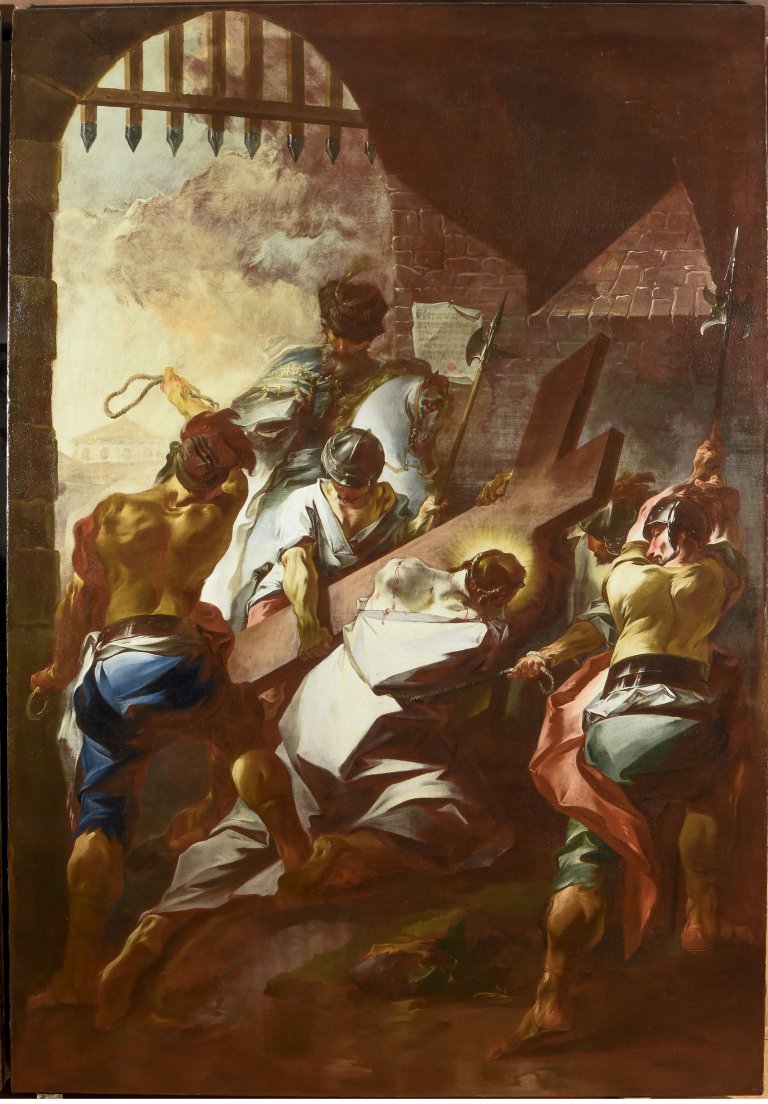The Way of the Cross from Orlice | Restoration 2010-2018

This year will be 300 years since the birth of Johann Wenzel Bergl, and it is also 230 years since his death. The “Berglose Year” brought together five Czech and Austrian institutions to jointly promote events associated with this important artist. These are the museums and monasteries where Bergl left the largest trail – the Town Museum from his native Dvůr Králove, Benedictine Abbey of Melk, the Cistercian abbey of Zwettl and the former Benedictine abbey of Klein-Mariazell. They also joined the Olomouc Museum of Art, where the exhibition of Bergls newly restored Cross Way from Orlice starts in February.
The passion of Christ, his martyrdom and resurrection are the central mysteries of the Christian faith. They have been depicted in fine arts since the Early Middle Ages, when they became a means of establishing an inner relationship between the faithful and suffering Jesus. The desire to join in the suffering of Christ’s painful way to Calvary crystallized in the 15th century when Ways of the Cross were created, inspired by the actual Via Dolorosa (Way of Sorrow) in Jerusalem. Places linked to the life of Christ and the Virgin Mary were worshipped by Christians since the early centuries of the Christian era. Originally Christ’s Way to Calvary was mostly commemorated during Easter. However, the first pilgrims soon started to make pilgrimages to the Holy Land. In view of the high costs and the dangers involved in such pilgrimages, and because Jerusalem was not permanently in Christian hands, the idea of a “spiritual transfer” of the Way of the Cross to a European setting was introduced. The Franciscan Order avidly promoted Jerusalem worship and initiated the building of Ways of the Cross or Mounts Calvary. The order was active in the Holy Land by the 13th century. The greatest developments in the establishment of exterior Ways of the Cross in Europe can be seen predominantly in the Baroque period when the worship was recognized by the church. At the end of the 17th century they become part of the interior of Franciscan churches in the form of painting cycles. They already had the set number of fourteen Stations with clearly defined themes. However, it was only in 1731 that Pope Clement Xll allowed the Franciscans to establish Ways of the Cross in all churches and elsewhere in the open on sacred ground.
The painting cycle in the Church of the Assumption of the Virgin Mary in Orlice near Letohrad, eastern Bohemia, also belongs to this category of interior Ways of the Cross with fourteen Stations. It was completed in 1759 by Johann Wenzel Bergl (1719–1789). He was born in Dvůr Králové nad Labem and is now regarded as one of the most prominent Viennese artists of the late baroque period. He was a sought-after painter of hanging paintings, altarpieces, cabinet pictures and portraits, and most importantly an exceptional fresco painter. He worked in Lower Austria and Vienna, where he was in the service of Empress Maria Theresa, but he also left a significant trace in his homeland of eastern Bohemia, Moravia, Slovakia and Hungary. After his studies at the Academy, he permanently settled in Vienna. Among his most prominent clients were the imperial court and Benedictine monasteries in Lower Austria. For his native Eastern Bohemia, he painted several altarpieces and three Way of the Cross cycles – for the church in Orlice, for the parish church in Dvůr Králové and for the Capuchin monastery in Opočno. His inspirational works influenced other artists who worked in Bohemia and Moravia shortly after their completion.
Before 2009, the paintings in Orlice were known only to art historians. Due to the critical condition of most of the paintings and their richly carved frames, the further existence of this artwork was in doubt and it was almost impossible to assess and evaluate the condition of this remarkable artwork objectively. A complex restoration of the whole set was undertaken, in particular due to generous financial support from the Pardubice Region. The restoration not only saved the endangered work of art, but also recovered its extraordinary artistic qualities – an exceptionally expressive artistic style and a vivid and lively colour palette. Restorers Šárka and Petr Berger carried out the restoration work between 2010 and 2018. The exhibition shows the complex project of the restoration of the Way of the Cross in Orlice and it is part of a long-term cycle of ‘restoration’ exhibitions aimed at presenting to the public outstanding, restored works, both from the collections administered by the Olomouc Archdiocesan Museum and those owned by the church.
Curator: Helena Zápalková
Expert cooperation: Petr Arijčuk
Restorers: Šárka and Petr Berger
Lender: Roman Catholic parish of Letohrad